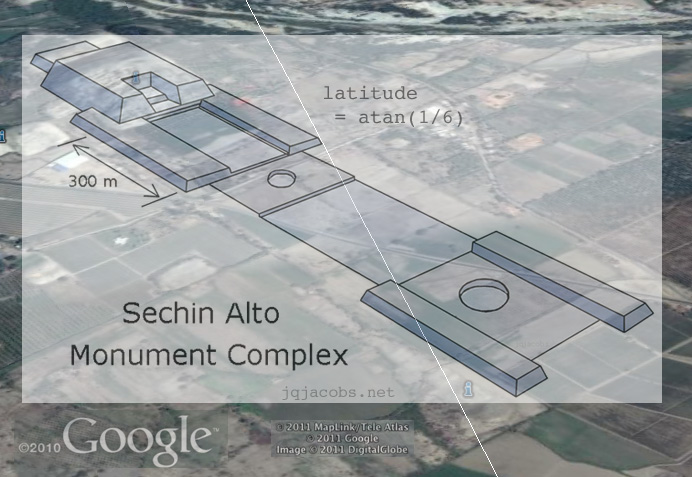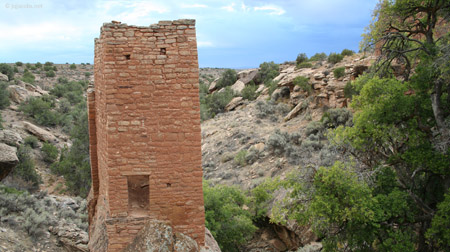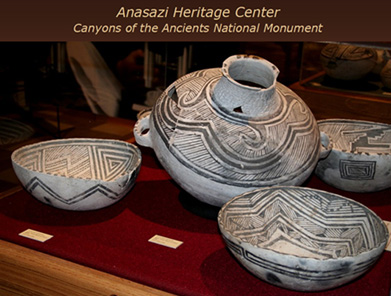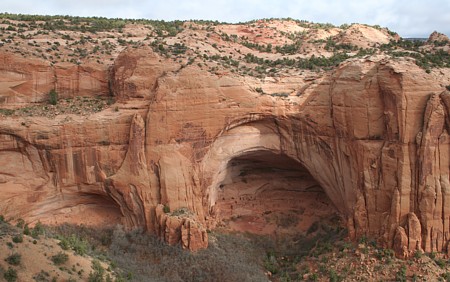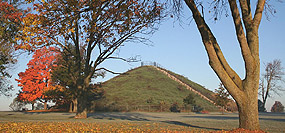|
2011 ArchaeoBlog |
|
2011.12.28 - Again, I found an amazing image online, quite serendipitously, of the ancient monumental stone carving at Otuzco. Again also the site is one with cliff-carved niches. This time the significant capital is Cajamarca, in the Andes about half way around the world from the Longmen Grottoes in China. I'm exploring, via the cyber globe, latitudes with specific mathematical properties. Having discovered Monk Mound is situated at atan 4/5 latitude, Ur Zigurrat at atan 3/5, Sechin Alto at atan 1/6, Huaca del Sol at atan 1/7, Chavin at asin 1/6, I recently explored more such lines in South America. Knowing my South American sites list is incomplete, targeted aerial inspection seemed a good idea. I found Otuzco on the atan 1/8 latitude near Kuntur Wasi and the ancient Andean capital of Cajamarca. The cluster of Panoramio image placemarks in Google Earth led me to notice the site.
2011.12.20 - I found an amazing image online, quite serendipitously, of ancient monumental stone carving. Check this out, the Longmen Grottoes near ancient Louyang. At Luoyang, a significant capital in ancient China—the center of five dynasties, a "heavenly terrace" was used for celestial observation and calendar management. The imperial capital included an official school of teaching, learning and research. While trying to find the ruins on the cyber-globe, I was clicking image placemarks. Researching archaeological sites online keeps getting easier and more interesting, and importantly, incredibly more informative than imagined a few decades ago. Near Luoyang in Google Earth, I noticed a dense forest of image placemarks. The ubiquity of high resolution digital cameras has resulted in an astounding amount of accessible, high-quality imagery on photo sharing websites. Our new geographic information systems are amazingly graphic. Google Earth displays a layer with Panoramio's geo-located imagery. I often keep Layers > Photos > Panoranio checked to enable viewing locations "on the ground" from many camera perspectives. Knowing the photo sharing domain references coordinates is also a particularly useful searching feature. I recommend exploring Google Earth's Panoramio layer at well-visited archaeology sites. It's no vacation to Machu Picchu, but today you really can see a lot of the world you want to travel to. The more images, the closer you should zoom in, to not miss some. 2011.12.20 - Another domain just sent a wave of visitors to the Hovenweep photo galleries. So, I've added new images of Holly House and 2650 x 1440 pixel deskpictures of Hovenweep Castle and Holly Tower. Click the images below to download the large deskpictures. Winter Solstice this year falls on Dec. 21 in my Pacific time zone. A happy holidays season to all.
2011.07.21 - Vore Buffalo Jump has been simmering on my back burner for years; not being an ancient monument the reason. Encountering Yellowstone National Park bison this summer put a capstone on my photos, already enhanced after a site revisit. My long-promised Vore Buffalo Jump images are finally available in this PowerPoint:
|

